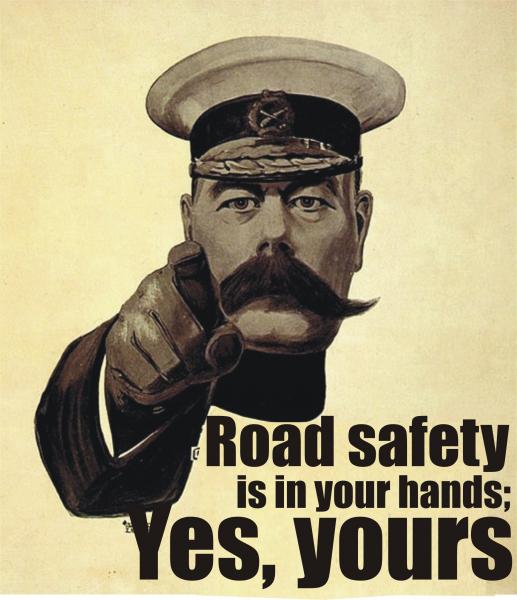The years 2011-2020 have been designated as the Decade of Action for Road Safety by the WHO. This is global acknowledgment of the gravity of road safety issues across the world and the lives being lost to it. Internationally, road accidents kill as many people as the major pandemics, malaria and TB (Source: National Red Cross and Red Crescent Societies). Mistakenly perceived as an inevitable consequence of economic development, India, touted to be an emerging superpower and expanding at a significant pace, has fallen victim all too easily, to this unfortunate trend. India loses a life every four minutes to a road accident. 10% of all road accident deaths take place on Indian roads (Source: Save Life Foundation).
While WHO proudly announces that worldwide, death from road traffic accidents has plateaued since 2007, India has bucked this trend by recording 1,46,133 deaths in 2015– our highest since records began. The Indian government has made a commitment towards halving road fatalities in the next two years. This seems ambitious, perhaps even unrealistic, considering that India is also simultaneously expanding its roadways at a frenetic pace. While reducing road fatalities have still not been offered the priority status they should, a sense of urgency is somewhat apparent in the government’s attitude. In the last few years, there has been a move to close gaps in road safety legislation. This has culminated in amendments to the Motor Vehicles Act which, in March 2017, was approved by the cabinet. The amendments have been tabled before the Lok Sabha for its approval. But will laws actually translate into better road user behaviour? Not without strict enforcement. And enforcement has always been a challenge for Indian authorities. But laws and enforcement aside, even putting aside the construction of our new highways, most of which appear poorly thought out, what can the public do to protect itself from this modern malady?

Take a few minutes to see how change can begin with you today.
Drink driving
Alcohol needs little introduction in relation to road safety. Rapidly absorbed into the system, symptoms of poor judgement, slow reflexes and poor depth perception rise exponentially to the amount of alcohol consumed. Driving with a Blood Alcohol Content (BAC) of between .03% and .05% (about two standard drinks) increases the risk of dying in a crash by three fold. If we manage to enforce India’s assigned BAC of .03%, we can dramatically reduce our road deaths by 20% - that is, nearly thirty thousand lives saved already. Surely, it must be worth the effort.
Motorcycle helmets
The car in front of you is belching out thick, black smoke. It’s a hot, dry, and dusty day. Your helmet appears to amplify all of this until the hair on your head, drenched in salty sweat, takes on a life of its own. But don’t let vanity take hold of your better judgement. In 2015, 36,803 road fatalities comprised motorcycle riders. Motorcycle riders are especially vulnerable, as they share the same road space as large and heavy vehicles and can travel at great speeds, but are not any more protected that the humble pedestrian. Injuries to the head and neck are the primary cause of motorcyclist’s death. And this was the very reason why helmets were invented. A securely fitted, ISI approved helmet can reduce the risk of death by 40% and the risk of severe injury by 70%. So do put on your helmet; and never mind that hair-do.
Seat belts
Why seat belts? Well, it’s the law, but which law? Newton’s first law of motion. ‘An object in motion stays in motion with the same speed and in the same direction unless acted upon by unbalanced force’. The object in motion is you in your car, the object which will continue in the same speed and direction will be you, when the car comes to a sudden stop on impact; the unbalanced force that can save your life, will be your seat belt. Wearing a seat belt will reduce the risk of death by 50% for front seat occupants and 75% for rear passengers. So remember you might get away breaking road laws, but Newton’s law? Not really.
Child restraints
Children on the road are particularly vulnerable. 5937 children died on Indian roads this last year and with a well-fitted child restraint we can reduce the likelihood of a fatal crash by between 54 and 80%. Clearly, a good child car seat is worth its weight in gold.
Over-speeding
Data report that 77.1% of accidents in 2015 were caused by driver error. Best practice, according to WHO’s road safety report is that “where motorised traffic mixes with pedestrians and cyclists (in the case of an Indian road, read cows, dogs, children and assorted modes of transport), the speed limit must be under 30km/h”. So when next tempted to speed on the highway, or even that quiet residential street, think of your vehicle as the potential weapon that it is.
While the Indian government works its way through the Amendment Act and while we are left wondering if the new laws will only ever exist on paper, these are the five things you can do to bring about change. It’s quite simple really. Don’t drink and drive. Do wear your helmet. Clip on your seat belt. Put your child in her car seat. And slow down.
It will save a life; most likely, your own.
Add new comment